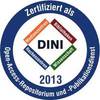Preview |
PDF, English
- main document
Download (6MB) | Terms of use |
Abstract
The pancreas located in abdominal cavity of the human body, plays essential role in digestion and blood sugar regulation. Various medical conditions such as pancreatic tumors or cystic lesions can disrupt its normal functioning. CT perfusion is the most commonly used functional imaging technique in diagnosing these tumors. However, its widespread adoption in clinical practice has been limited by several challenges. One significant obstacle is the absence of standardized protocols for image acquisition. Moreover, image noise can negatively impact perfusion measurements, resulting in inaccuracies when quantifying tissue perfusion, thereby compromising it’s clinical effectiveness. Efforts to mitigate image noise and improve image quality are essential to enhance the accuracy of CT perfusion measurements. Another critical limitation of CT perfusion is the associated radiation exposure, which poses risks to patients, particularly in vulnerable populations such as children and pregnant women.
The objective of this thesis was to conduct a comprehensive meta-analysis of CT perfusion within the context of pancreatic research articles. This involves collecting and analyzing a large number of published research articles related to pancreatic CT perfusion, with a focus on including studies that report quantitative perfusion parameters derived from CT perfusion. Furthermore, the aim was to identify acquisition parameters that influence quantitative measurements, facilitating standardization of those parameters. Additionally, noise correction algorithm was developed using digital perfusion phantoms to mitigate the negative impact of image noise on BF perfusion measurements. Further, for reducing radiation exposure and acquisition time of CT perfusion, a novel perfusion technique namely, FPA was implemented. FPA model was validated using the most commonly used CT perfusion model, MSM. In contrast to CT perfusion using multiple volume acquisitions, FPA uses only two volume acquisitions. The timing for these two volume acquisitions was estimated and optimized based on the information about contrast agent injection. The reduction in number of volume acquisitions reduces the radiation dose, hence, overcoming one of the critical limitations of CT perfusion.
The meta-analysis findings indicated an upward trend in number of CT perfusion studies and sample size since 2009. Furthermore, there was an increase in amount of contrast agent and iodine levels used over the years. The tube potential showed a slight decrease, while tube current-time product increased gradually. Anatomical coverage expanded, and slice thickness decreased over time. Most studies reported significant differences in BF and BV between normal pancreatic tissue and pathological conditions. However, the findings for permeability were less consistent, with only about half of the studies showing significant differences. Additionally, most research studies preferred vendor-supplied software for post-processing, and MSM is the most commonly used model to quantify pancreatic perfusion. It has been found that certain CT acquisition parameters had statistically significant effect on quantitative perfusion measurements, particularly when comparing normal versus pathological pancreatic tissue.
The findings from noise correction algorithm demonstrated a significant improvement in the accuracy of BF measurements. Detailed analysis of GTBF, noiseimpacted BF, and corrected BF values across various tissue regions showed the efficacy of noise correction in mitigating the adverse effects of noise on BF perfusion measurements, leading to more precise quantification of tissue perfusion. Moreover, the observed enhancements in CNR and agreement between GTBF and noise-corrected BF measurements further underscored the utility of noise-correction algorithms in refining BF measurements.
The results from FPA technique demonstrated a strong correlation in perfusion measurements when compared to the reference method, MSM. Small COV and box plot analysis revealed reduced BF variation over acquisition time, particularly in parenchyma tissue. Therefore, a high correlation to MSM could be achieved depending upon selection of acquisition time within the optimum time range. Variations across tissue types were statistically significant, emphasizing the discriminative capabilities of FPA. Moreover, FPA exhibited advantages in terms of reduced radiation exposure and acquisition times compared to conventional CT perfusion techniques.
For clinical application of FPA, the process begins with intravenous injection of a nonionic iodinated contrast agent, followed by a bolus of saline solution (NaCl). Specifically for pancreatic imaging, first volume scan is to be acquired after contrast agent bolus reaches a threshold of 120 HU in the abdominal aorta, which can be precisely achieved by bolus tracking. Subsequently, the second volume scan is planned after a delay ranging from 15.5 to 20.0 seconds, based on the findings of current thesis.
In conclusion, this thesis has addressed critical challenges of CT perfusion, emphasizing the need for standardization of protocols, the impact of image noise, and concerns related to radiation exposure. The development and application of the noise correction algorithm and FPA technique represent significant steps toward making CT perfusion scans more clinically acceptable.
| Document type: | Dissertation |
|---|---|
| Supervisor: | Kauczor, Prof. Dr. med. Hans-Ulrich |
| Place of Publication: | Heidelberg |
| Date of thesis defense: | 23 January 2025 |
| Date Deposited: | 17 Mar 2025 13:08 |
| Date: | 2025 |
| Faculties / Institutes: | Medizinische Fakultät Heidelberg > Radiologische Universitätsklinik |
| DDC-classification: | 500 Natural sciences and mathematics |
| Controlled Keywords: | Computed Tomography, Perfusion, Pancreas, Image processing |
| Uncontrolled Keywords: | Dynamic CT perfusion |









